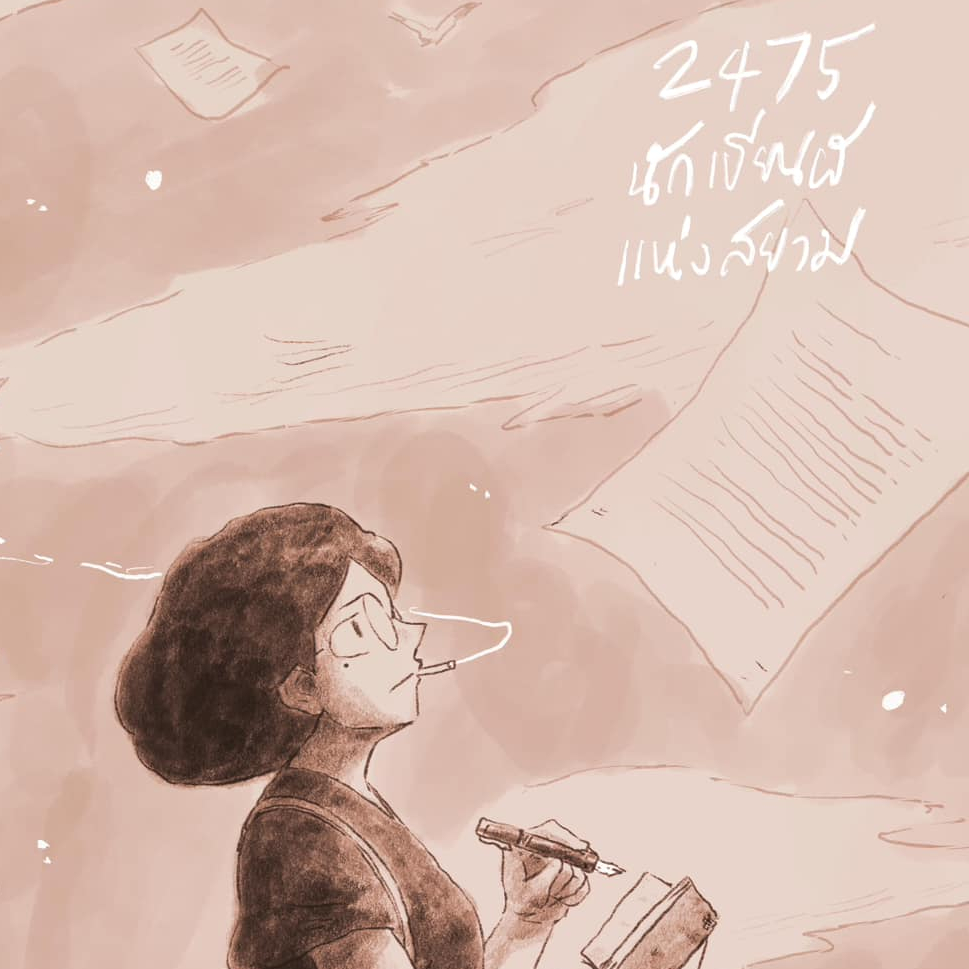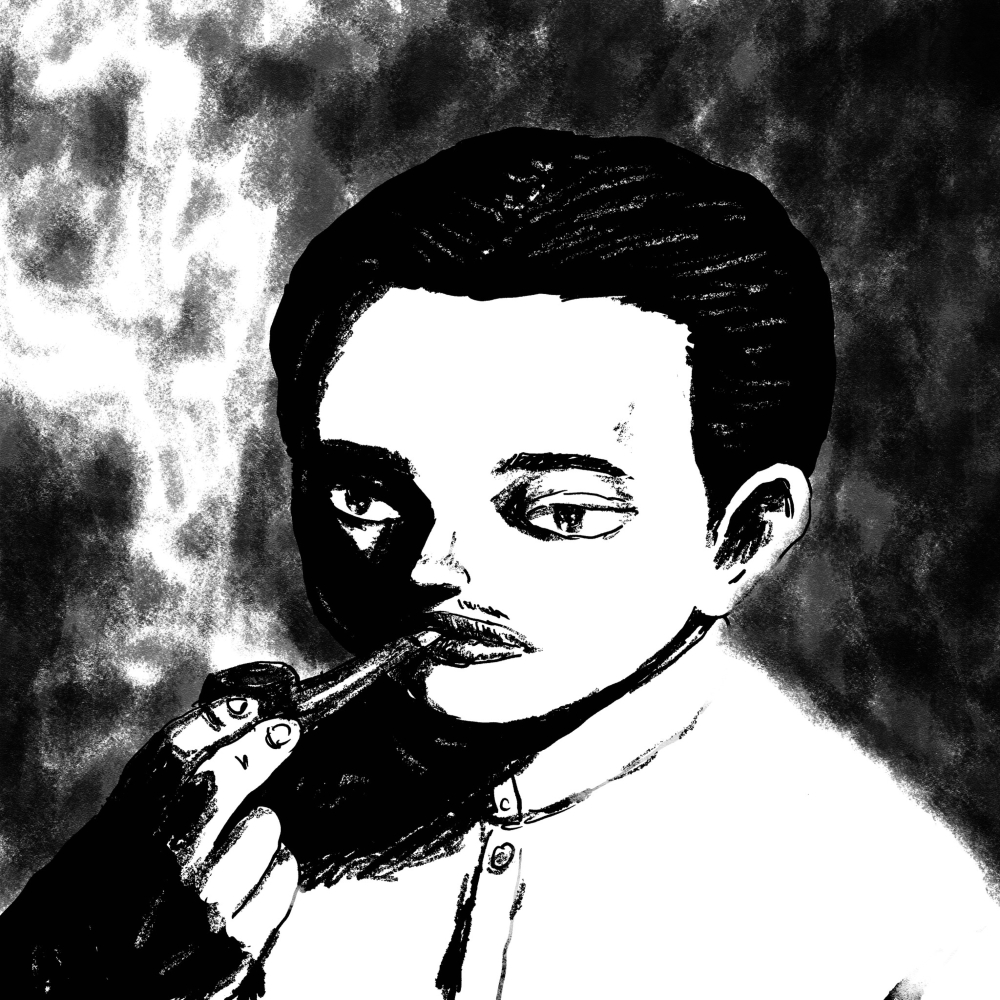

In the years following the 2014 coup, the military government set about removing public reminders of the 1932 revolution, when Thailand transitioned from absolute monarchy to parliamentary democracy. In the catalogue for his exhibition The L/Royal Monument (นิ/ราษฎร์), Wittawat Tongkeaw describes the disappearance of “physical components—names, plaques, monuments” commemorating the revolution. Similarly, in his chapter in Rama X (edited by Pavin Chachavalpongpun), Chatri Prakitnonthakan discusses “the destruction of significant buildings and monuments related to the memory of the People’s Party”.
Most notoriously, a plaque in Bangkok’s Royal Plaza was covertly replaced in 2017 with a new plaque honouring the monarchy. Leaders of the recent student protest movement created a new plaque with a democratic inscription, and installed it at Sanam Luang on 20th September 2020, though it was removed by the authorities almost immediately. Reproductions of the new plaque have been shown at various exhibitions, including Wittawat’s 841.594, and it appears prominently in Chulayarnnon Siriphol’s film 100 Times Reproduction of Democracy (การผลิตซ้ำประชาธิปไตยให้กลายเป็นของแท้).
The new plaque is an indication of a political awakening among young Thais — known as ta sawang — and a renewed interest in the 1932 revolution specifically. One of the groups organising the recent protests is called Khana Ratsadon, in tribute to the political party of the same name that led the 1932 revolution. A new library of pro-democracy books is called 1932 People Space Library, its name referring to the year the revolution took place. Souvenir items from 1932 were displayed at the Revolutionary Things (ของ [คณะ] ราษฎร) exhibition in 2018. Charinthorn Rachuratchata’s exhibition Museum 2032 (พิพิธภัณฑ์ ๒๕๗๕) looked forward to the revolution’s centenary.
This revival of interest in the events of 1932 is a relatively recent phenomenon. In 2010, vox pop interviews for Abichon Rattanabhayon’s short film The Six Principles (สัญญาของผู้มาก่อนกาล) demonstrated the public’s apathy towards the revolution. But a few years later, in 2013, the change in attitudes was apparent when Pen-ek Ratanaruang’s documentary Paradoxocracy (ประชาธิป'ไทย) achieved unexpected box-office success. (Paradoxocracy features an extended discussion of the revolution, and begins by reproducing the text of a 1932 manifesto railing against King Prajadhipok.)
The 1932 revolution is central to the plot of a new book, 2475 นักเขียนผีแห่งสยาม (‘1932: the ghost writer of Siam’), by Tanis Werasakwong (known as Sa-ard) and Podcharakrit To-im. The book tells the full story of the revolution in the form of a graphic novel, featuring prominent politicians of the period — and even King Rama VII — among its main characters. (But Rama VIII was omitted from the narrative, to avoid potential lèse-majesté charges.) The project’s website describes the revolution as “an event in Thai history that has been erased from collective memory”, a point also made in Prabda Yoon’s short film Transmissions of Unwanted Pasts (วงโคจรของความทรงจำ).
Most notoriously, a plaque in Bangkok’s Royal Plaza was covertly replaced in 2017 with a new plaque honouring the monarchy. Leaders of the recent student protest movement created a new plaque with a democratic inscription, and installed it at Sanam Luang on 20th September 2020, though it was removed by the authorities almost immediately. Reproductions of the new plaque have been shown at various exhibitions, including Wittawat’s 841.594, and it appears prominently in Chulayarnnon Siriphol’s film 100 Times Reproduction of Democracy (การผลิตซ้ำประชาธิปไตยให้กลายเป็นของแท้).
The new plaque is an indication of a political awakening among young Thais — known as ta sawang — and a renewed interest in the 1932 revolution specifically. One of the groups organising the recent protests is called Khana Ratsadon, in tribute to the political party of the same name that led the 1932 revolution. A new library of pro-democracy books is called 1932 People Space Library, its name referring to the year the revolution took place. Souvenir items from 1932 were displayed at the Revolutionary Things (ของ [คณะ] ราษฎร) exhibition in 2018. Charinthorn Rachuratchata’s exhibition Museum 2032 (พิพิธภัณฑ์ ๒๕๗๕) looked forward to the revolution’s centenary.
This revival of interest in the events of 1932 is a relatively recent phenomenon. In 2010, vox pop interviews for Abichon Rattanabhayon’s short film The Six Principles (สัญญาของผู้มาก่อนกาล) demonstrated the public’s apathy towards the revolution. But a few years later, in 2013, the change in attitudes was apparent when Pen-ek Ratanaruang’s documentary Paradoxocracy (ประชาธิป'ไทย) achieved unexpected box-office success. (Paradoxocracy features an extended discussion of the revolution, and begins by reproducing the text of a 1932 manifesto railing against King Prajadhipok.)
The 1932 revolution is central to the plot of a new book, 2475 นักเขียนผีแห่งสยาม (‘1932: the ghost writer of Siam’), by Tanis Werasakwong (known as Sa-ard) and Podcharakrit To-im. The book tells the full story of the revolution in the form of a graphic novel, featuring prominent politicians of the period — and even King Rama VII — among its main characters. (But Rama VIII was omitted from the narrative, to avoid potential lèse-majesté charges.) The project’s website describes the revolution as “an event in Thai history that has been erased from collective memory”, a point also made in Prabda Yoon’s short film Transmissions of Unwanted Pasts (วงโคจรของความทรงจำ).


